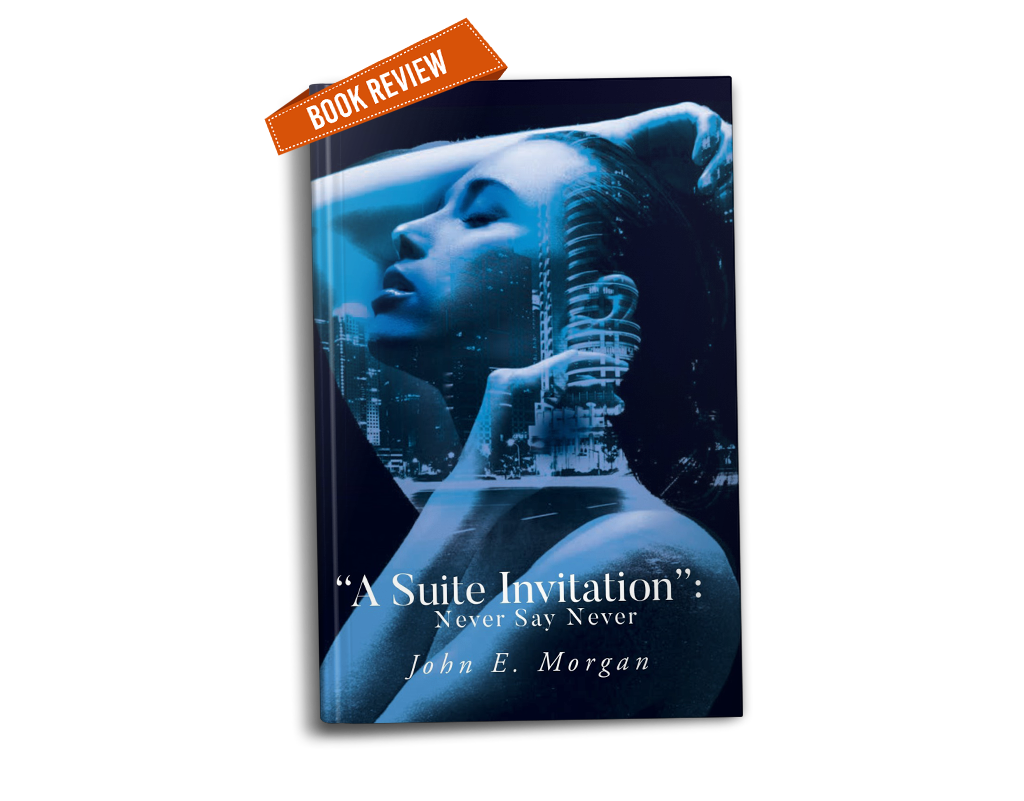
HEAR FROM THE BOOK EXPERTS

In partnership with Bookside Press

A Suite Invitation: Never Say Never
John E. Morgan
Reviewed by: Mari Carlson, The US Review of Books
“A tall red kinky-haired woman in a tight fitting red gabardine skirt appeared. I found my story, but she wouldn’t look my way…”
A writer and musician, in and out of church, recounts his romances through the years. All the women the narrator encounters seduce him with their beauty while also holding their cards close and playing hard to get. He, too, exhibits extremes. Both Jake, a faithful, working man, and Shane, his alter ego who disregards morality for the pursuit of pleasure, approach sex with full force.
Each story tells of spiritual battles not only between lovers but also within the stories themselves. Each culminates in a passionate moment (or several). In a few stories, a minister and his lovely assistant hide their lust for one another behind closed doors. Jake/Shane steps in to absorb the woman’s hurt and desire when the minister betrays her. In other stories, older women release a longing strengthened by their years onto young Jake/Shane. In all the stories, the women are formidable in both size and personality. Ample bosoms and butts reflect inner strength and largess. These women are masters of the kitchen and of choirs. They are accountants, models, and civil servants. Whether hairdressers or therapists, they are more than their professional labels. They are givers of advice and friends. They look out for themselves. They are in charge, demanding attention and telling him what they want in bed. Jake/Shane obliges in his enjoyment of all their riches.
The writing in this novel luxuriates in bodily fluids and sounds, textures creating a sensual world. Set in New York City, in church camps, and on vacations in the South, the stories’ true landscape is an inner world. Formed in urban grit and hustle, the narrator forges similarly active, do-whatever-is-called-for spaces between himself and lovers. The partners pant and writhe, grab and thrust. They may be polite at work, but the stories show characters at play, after hours, and in the shadows. The theme of darkness, of secrets and hiding, plays out in writing that hovers at the edges of sense. In many ways, it comes across as impressionistic. The chronology is murky in many stories, making a sequence of events sometimes hard to discern. Couples come together once, then again years later without much change. Repartee is often in an almost call-and-response rhythm. The emphasis is on developing emotional, lyrical, and artistic climaxes as opposed to describing a linear train of thought. “What are you going to do?” and “Why wait?” are frequent questions that convey the stories’ urgent, hormonal tone.
In an age of Me Too and the Women’s March, a collection of vignettes narrated by a ladies’ man at first appears misogynistic. The narrator is not the conqueror, however. His love of shapely bodies, the female wills and whims he obeys, and his tales of women’s lives show an admiration and respect that is convincing. This is an ode to women, their prowess, their beauty in many shapes and sizes, and their intelligence, both intellectual and emotional. The stories overturn traditional moralities in their depiction of sex as a means to power as well as pleasure. When they are betrayed, women are not portrayed as victims. Instead, they take an opportunity to find their own fun. Jake/Shane may speak in the first person, but he does so with humility. He is a writer, and the women are the subjects and agents. He tells their stories as tributes and in gratitude.

